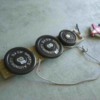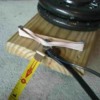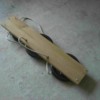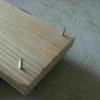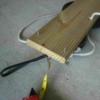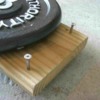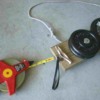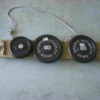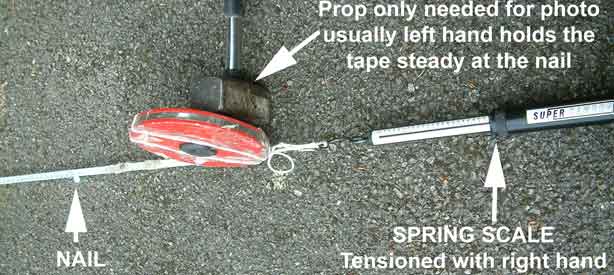To see comments on this post click "comments" at upper right.
As a new measurer, I worry a lot about the accuracy of a calibration course. I see the placement of marks on the pavement and depending on an otherwise inexperienced person holding the end of the tape as a risk.
These photos show a skid which I rigged up that holds the end of the tape and gives me excellent peace of mind.
It is made from a piece of decking 5/4" lumber which is very strong and stable, and 2-1/2" deck screws driven part way through, which have sharp points that firmly engage the surface, even on smooth concrete and ice.
It is weighted with 30 lbs of barbell-type weights from the Sports Authority.
I tested it with 20 pounds of lateral force from a fish scale and found it had no tendecy to slip, even on my smooth, painted garage floor.
In use, you place the skid and make the mark, then stretch the tape out and make your other mark, with tape, on the pavement, using the spring scale to put 10 lbs of tension.
Then you go back to the origin and look again, with your own eyes, and verify that you indeed postioned the skid so the tape zero mark is exactly over your first tape mark. You now know the skid did not slip and you did not make any mistakes.
You then use the rope to put it over your shoulder and take it to the next measuring point.
Rubber bands over the top end of the screws make sure that the tape does not come out.
The skid is great! You don't have to coordinate times with it; it does not complain, or get cold, or get hot, and it is not insulted if you decide you want to reapeat or double check a measurement.
Steve Collins
Attachments
Original Post

